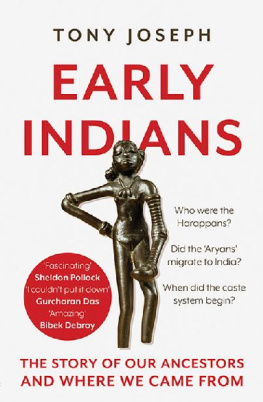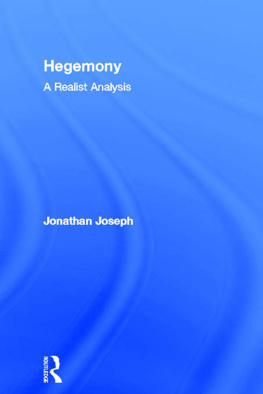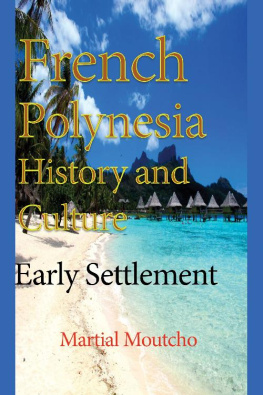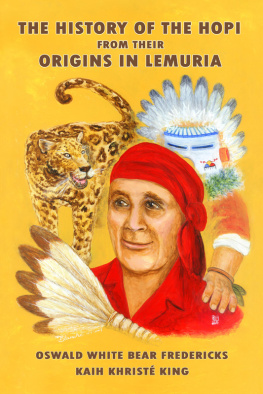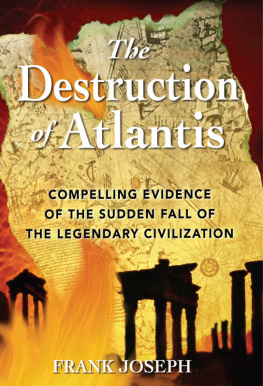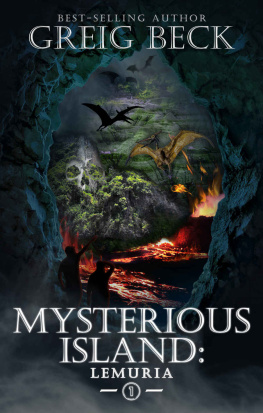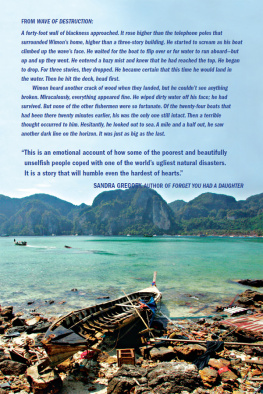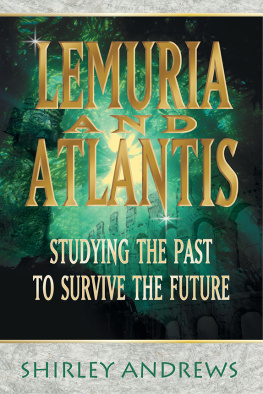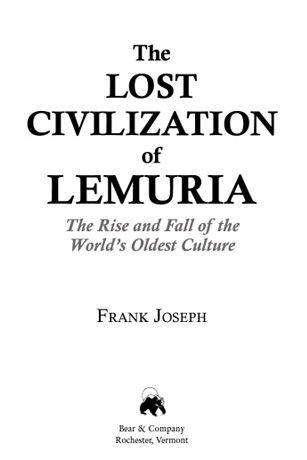

To Professor Nobuhiro Yoshida, President, the Japan Petrograph Society

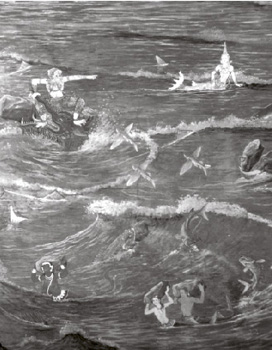
Scene from the Ramayana, the Hindu epic depicting the flight of survivors from their Pacific motherland. Mural is located at the Wat Phra Keo temple complex, Bangkok, Thailand.
INTRODUCTION
Terra Incognita
We are tempted to inquire how far the fact that some of those beliefs and legends have so many features in common is due to chance, and whether the similarity between them may not point to the existence of an ancient, totally unknown and unsuspected civilization of which all other traces have disappeared.
PROFESSOR FREDERICK SODDY,
NOBEL PRIZE WINNER, 1910
The menacing silhouette of a stranger rushed out of the dark. As I raised my fists to defend myself, two accomplices seized me from behind, one on either side. Someone grabbed me forcibly around my neck, and in moments I sank, choking, to the paved street.
It took a long time for consciousness to flow slowly back into my oxygen-starved brain. I was alone in the night. The attack seemed distant, vague, unreal, and dreamlike as I gazed up serenely at the night sky sparkling with that celestial necklace we call the Milky Way. For some moments, I lay there peacefully on my back, as though among the serene prairies of my Illinois boyhood. In fact, I was sprawled in the middle of a cobblestone side street in Cuzco, the ancient capital of Peru. Hardly more than an alleyway, it connected the citys postconquest cathedral with the Coricancha, the Incas preeminent temple, known as the Enclosure of Gold. I had been assaulted, as it were, between worlds. Cuzco was the Navel of the World, the sacred center of eternal rebirth.
Staggering to my feet, I was grateful to be alive and unscarred by the daggers traditionally carried by muggers in this part of the world, where theft in all its manifestations is a national industry. But my throat was raw, and I could not swallow without pain. Worse, I had been stripped of all money and identificationtravelers checks, credit card, passport. I was without any visible means of support or identity in a very strange land, not a condition to be recommended.
Even in the blurred aftermath of my violent encounter, I could not help but think of the last Inca emperor, Atahualpa, strangled to death by the Spanish five centuries before. I knew now what it was like to be murdered. It wasnt so bad. It was living that was painful. You know youre alive when youre in pain. Still, I felt something of a bond with old Atahualpa.
Despite this misadventure, I pushed on via rickety railways through the Andes to the sky-city of the Inca. At midnight, alone with the surrounding mountaintops, I saw a fog bank slowly part like a ghostly curtain to reveal Machu Picchu shimmering in eerie moonlight. From there, I explored Lake Titicaca, our planets highest lake, and the nearby ruins of Tiahuanaco, the inexplicable capital of an impossible empire. In a Lima back street, at the Herrera Museum, I had found the blond and red-haired mummies of a pre-Inca people, obviously not Indian, who long ago ruled the Pacific Coast. Days later, from the vantage point of a rented plane high above the driest desert on Earth, the largest art collection in the world spread out 3,000 feet below my camera amid the gargantuan images of plants, animals, geometric figures, and lines running dead straight for dozens of miles over the earthquake-prone Nazca Plain.
Later, back on more solid ground in northern Illinois, I still resonated with the images and emotions built up during almost two months of intensive travel into South Americas pre-Spanish past. To celebrate my homecoming (if not my survival), friends took me to a favorite restaurant in Chicagos Chinatown, on the citys South Side. The Saturday night dinner was going to include more than a good meal, however. Evening entertainment featured the revue of a university-sponsored folkdance troupe visiting from Hong Kong. It was a kind of pageant, in which performers dressed in regional costumes pantomimed highlights of Chinese history.
A disembodied voice announced over the public address system in broken but intelligible English that the first number would be the oldest known dance in China, performed by a young lady wearing an outfit believed to date back in its design to the legendary dynasty of Emperor Shin How Twi, from whom China derived its name, more than 4,000 years ago. With that, the strident live orchestra struck up its anticipated sweet-and-sour music. I was utterly astonished, however, by the sudden appearance of the dancer on stage. My mind faltered for a prolonged moment of disbelief. Here was this little Chinese maid executing her lands most ancient dance, dressed in singular attire almost identical to that of the Aymara Indian girls I had seen performing their countrys oldest folk dance in the High Andes of Peru just a few days before.
The resemblance between their dress was as amazing as it was undeniable. There was no doubt in my mind that someone from China had once (at least) very long ago crossed a formidably vast ocean to leave an indelible cultural mark on the natives of South America at the beginning of their history. The Chinese have been skilled seafarers for many centuries, although Peruvian fishermen were not known to venture beyond sight of land. Influences must have come from west to east across the Pacific, I assumed. Even so, Andean civilization was not Chinese. They seemed to have nothing in common, other than a nearly identical costume worn by dancers in both parts of the world.
Some months later, I was freelancing as a reporter for Asian Pages, a St. Paul newspaper serving the Asian community in Minnesota. An assignment took me to a local cultural center, where the Cambodian New Year was being celebrated with traditional performing arts. Having already visited Southeast Asia, I was at least aware of the attractive synthesis of musical and dance themes interwoven between Thailand and India, Vietnam and Laos, Burma and Cambodia, and so on. But one of the numbers, supposedly from a province revered for the living traditions of its cultural antiquity, was like nothing I had encountered in all my travelsat least not in Asia.
It was totally un-Cambodian. Separate lines of male and female dancers performed together, dressed not in typically ornate and glittering costume, but in simple loincloths and sarongs, with large green leaves in their hair, the men bare-chested. They chanted more than sang to the rhythmic clop-clop of halved coconut shells while making fluidly graceful gestures with their hands and arms. It was the most Polynesian performance I had ever seen outside Honolulu.
Could Cambodians during ancient times actually have ventured thousands of miles into the Pacific Ocean and taught the islanders their dance? Or did Polynesians bring something of their ceremonial activity to Cambodia? Both possibilities seemed unfounded and preposterous. Yet the Cambodian New Years dance was the mirror image of something more commonly known in Hawaii. Were these resemblances, no matter how many or how close, entirely coincidental? If not, what did they really mean? I remembered Chicagos Chinese lass dancing in Peruvian attire. Rather than South American visitors in ancient China, or Cambodians in Polynesia, perhaps Pacific Islanders, Aymara Indians, Southeast Asians, and third-millennium-B.C. Chinese were themselves culturally influenced by another, separate, outside source common to them all.
Next page


